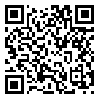BibTeX | RIS | EndNote | Medlars | ProCite | Reference Manager | RefWorks
Send citation to:
URL: http://tumj.tums.ac.ir/article-1-534-en.html
Background: The use of synchronized intermittent mandatory ventilation (SIMV) and pressure support ventilation (PSV) have been used for older children and adults. The purpose of this study was to compare PSV and SIMV modes in weaning from mechanical ventilation in neonate with respiratory failure.
Methods: A randomized clinical trial study carried out in NICU ward of Valiasr hospital Imam Khomeini Hospital complex, Tehran, Iran. Thirty neonates enrolled in two groups of 15. At the weaning time they randomly assigned to SIMV or PSV. They compared for tidal volume (VT), peak inspiratory pressure (PIP), incidence of pneumothorax, weaning failure and duration of weaning. For two groups to be homogeneous, maternal disease during pregnancy were also considered.
Results: In this study, VT, PIP, incidence of pneumothorax and weaning failure did not differ between groups duration of ventilation of the two methods (hours) and duration of hospitalization (days) were separately calculated. The only meaningful difference in two groups were due to weaning duration. The neonates weaned by PSV mode experienced shorter weaning time. (6.05 hours). The weaning time in SIMV mode was longer (45 hours) (P=0.006). There were no other meaningful differences between the two groups
Conclusions: According to the results of this study there were no advantage using PSV over SIMV except that the weaning time were shorter in PSV. This decrease in weaning time causes less dependence of the neonate to the ventilator and as a result secure them from complications.
| Rights and permissions | |
 |
This work is licensed under a Creative Commons Attribution-NonCommercial 4.0 International License. |





